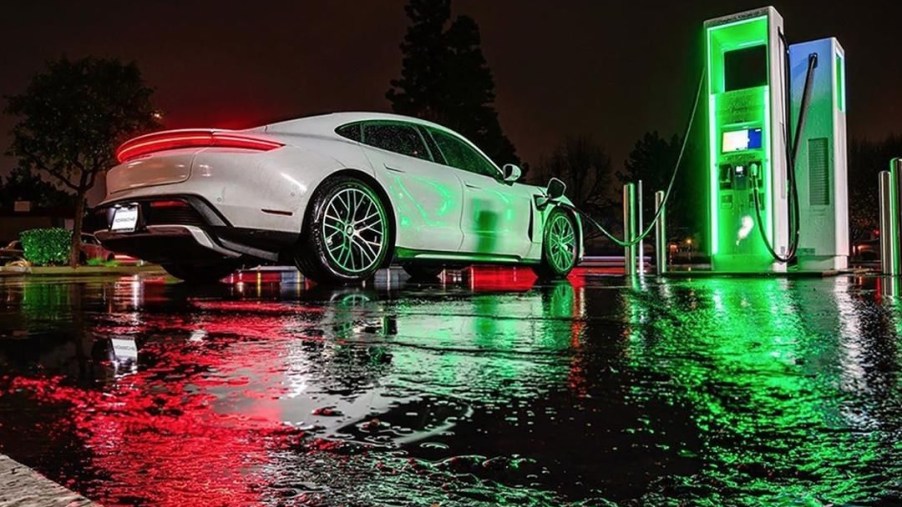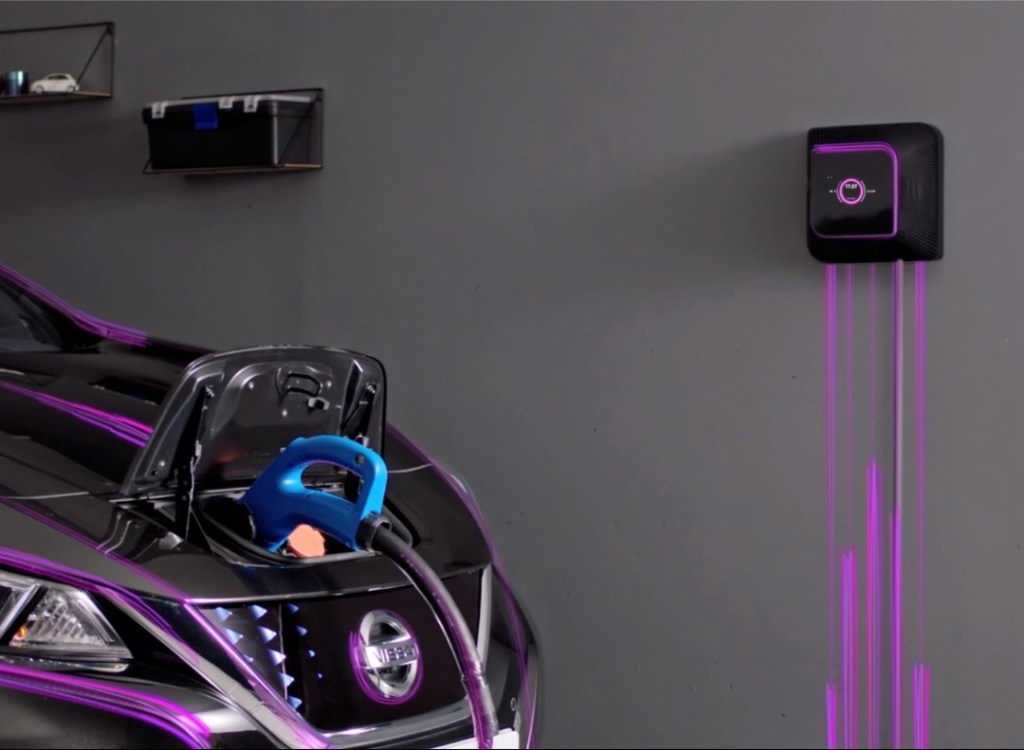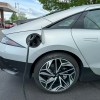
Why Fast Charging an EV Costs More
Charging, arguably more so than battery capacity or chemistry, is one of the biggest limitations to widespread EV adoption. Supercapacitors could theoretically cut charge times, but they’re not production-ready. And although hydrogen fuel cells can refuel as quickly as ICE vehicles, the infrastructure isn’t there yet. New fast-charging stations, and fast-charging EVs like the Porsche Taycan, seem to be the first step in the right direction. However, fast charging may cost you more than you’d think.
How fast charging works
As Roadshow and MyEV explain, charging speed relies upon not only the charger but the EV itself, too.
Currently, there are 3 levels of EV charging. Level 1 is your basic home wall outlet, capable of maybe 2 kW of power. Level 2 chargers bump up the current and deliver up to 90 kW. These are commonly offered as optional automaker upgrades, although stand-alone companies do sell them. And Level 3—which DC fast charging belongs to—increases the current flow even more. Tesla’s Superchargers can deliver 120 kW right now, but Porsche claims its Taycan can handle 270 kW. These are your high-end public charging stations, the Union of Concerned Scientists reports.
But, as with any other electrical device, fast charging an EV is only possible if the EV’s hardware and software work with the charger. For example, Tesla’s Supercharger network only ‘unlocks’ the fastest speeds for Tesla cars.
Although, when it comes to calculating charging costs, speed isn’t the only deciding factor.
Fast charging cost comparison
To be fair, charging speed is important to determining costs. As Edmunds explained, the longer an EV is connected to the grid, the more electricity flows, and so costs grow.
The problem is that not every single public charging station works that way. For example, Plugincars.com reports that some public Level 2 stations are free-to-use. Others, like the EV station in Maryland that was converted from a gas station, Yahoo News reported, charge based on the local rates. And the Level 3 DC fast chargers make it even more complicated.
Some have a flat ‘per-session’ fee. Some Level 3 chargers, like Tesla’s Superchargers, require a subscription fee. And while The Drive reports the Taycan can (in the right conditions) recharge from 5% to 88% in less than 25 minutes, it apparently doesn’t come cheap. Matt Farah of The Smoking Tire reports he had to pay $35 to recharge his press car at an Electrify America charger. It is worth noting that, according to Tech Crunch, Porsche Taycan buyers will receive 3 years of free charging at Electrify America stations.
With this in mind, if you are interested in an EV for cost-saving purposes, charging at home is still the cheapest way. MyEV calculated that, for an EV driving around Chicago, recharging at a Level 3 DC charger long enough to go 25 miles would cost $2.72. But, at home, the recharge cost dropped to $0.92.
This cost savings partly stems from time-of-use plans, according to the UCS. TOU plans offer lower electricity rates during off-peak hours, such as late at night. So, if you’re charging your vehicle at night, at home, you’ll spend less than you would at some fast-charging stations, but not lose any free-time during the day.
Do the benefits outweigh the costs?
At the moment, one reason why fast-charging stations are more expensive is because they’re fairly new. The companies have to recoup the building costs, and the wiring and software needed for Level 3 charging is slightly more advanced. As more get built, it’s likely the cost will go down.
Level 3 chargers also allow EVs to act more like ICE cars, with shorter ‘refill’ times. For people who want to take their EVs long-distances, possibly while towing trailers, having a widespread fast-charging network like today’s gas stations will be important. Level 3 chargers will be a key fixture in the EV future because they alleviate this worry, according to Jalopnik.

However, if you’re someone who mainly uses an EV for short trips, charging from home will likely make more financial sense. Especially considering it’s now possible to get a Level 2 charger that can also feed excess power from the EV back into the grid, or your home. It’s also something that’s not possible with ICE vehicles. Now that’s a proper disruption.
Follow more updates from MotorBiscuit on our Facebook page.


